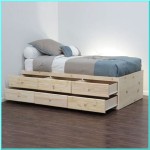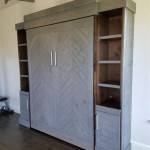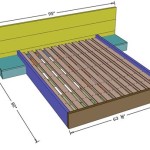Are Hospital Beds Standard Size?
The question of whether hospital beds adhere to a standard size is more complex than a simple yes or no answer. While there are common dimensions frequently used in the manufacturing of hospital beds, variations exist due to factors like patient needs, specialized medical equipment, and regional preferences. Understanding these nuances is crucial for healthcare facilities, equipment manufacturers, and even patients and their families.
In the United States, the most commonly encountered hospital bed size is approximately 36 inches wide and 80 inches long. These dimensions accommodate a significant portion of the adult population. However, bariatric beds, designed for individuals with higher weight capacities, are significantly wider, often ranging from 42 to 48 inches, and sometimes even larger. Pediatric beds, conversely, are smaller, tailored to the size and needs of infants, children, and adolescents. These variations demonstrate that while a common size exists, it's not universally applied.
International standards also play a role in hospital bed sizing. While the U.S. dimensions are prevalent, other countries may adhere to slightly different measurements. European countries, for example, sometimes utilize metric measurements that translate to dimensions close, but not identical, to U.S. standards. These regional differences can impact the procurement and interchangeability of hospital beds in a global context.
Beyond length and width, the height of hospital beds is another crucial dimension. Adjustable height is a standard feature in modern hospital beds, allowing healthcare professionals to position the bed at an ergonomic height for patient care and facilitating patient transfers. This adjustability, while beneficial, adds another layer of complexity to the concept of standardized sizing, as the overall footprint of the bed can change based on the height setting.
The specific requirements of different medical specialties also influence hospital bed dimensions. Intensive care unit (ICU) beds, for example, often incorporate features like integrated scales, specialized side rails, and attachments for various monitoring equipment. These additions can impact the overall size and configuration of the bed, deviating from the standard dimensions mentioned earlier. Similarly, birthing beds are designed with specific functionalities for labor and delivery, impacting their size and shape.
Manufacturers also play a role in the diversity of hospital bed sizes. While many adhere to common dimensions for general-purpose beds, they also offer customized options to meet specific needs. This customization can range from minor adjustments to length or width to more significant modifications for specialized applications. This flexibility allows healthcare facilities to tailor their bed inventory to their patient demographics and clinical requirements.
The concept of "standard size" for hospital beds, therefore, becomes more of a guideline than a strict rule. While the commonly cited dimensions provide a useful benchmark, the actual sizes encountered in practice can vary considerably. Understanding these variations is crucial for healthcare facility planners, equipment purchasers, and healthcare professionals responsible for patient safety and comfort.
In addition to the bed frame itself, accessories like mattresses and side rails further complicate the standardization issue. Mattresses, for instance, must be compatible with the bed frame dimensions, and specialized mattresses, such as pressure-relieving mattresses for patients at risk of bedsores, can have different thicknesses and properties. Side rails, essential for patient safety, come in various configurations and sizes, impacting the overall width of the bed.
The ongoing advancements in hospital bed technology also contribute to the evolving nature of bed dimensions. Integrated features like patient lifts, advanced monitoring systems, and motorized adjustments contribute to the overall size and complexity of modern hospital beds. As technology continues to evolve, further variations in bed dimensions can be expected.
When considering the question of hospital bed standardization, it's essential to consider the practical implications of these size variations. For example, the dimensions of doorways, elevators, and patient rooms must accommodate the movement and placement of hospital beds. Healthcare facilities must carefully consider these logistical factors when selecting and installing hospital beds.
Furthermore, the comfort and safety of patients are paramount. The appropriate bed size is crucial for ensuring patient comfort and preventing falls or injuries. Healthcare professionals must assess individual patient needs and select a bed that provides adequate support and safety features.
In conclusion, while a common size exists for hospital beds, the reality is far more nuanced. Variations in dimensions arise from patient needs, specialized equipment, regional preferences, and manufacturer customization. Understanding these factors is essential for ensuring patient safety, comfort, and efficient healthcare delivery.

What Is The Standard Width Of A Hospital Bed

Standard Steel White Two Section Hospital Bed Size Dimension 72x36x20

Hospital Bed Manufacturer Suppliers Standard Beds Manufacturers

Hospital Bed Dimensions What Size Is A

Standard Dimensions 2 Crank Hospital Bed Manufacturer In China

The Glideaway Guest Bed
What Is The Normal Size Of A Hospital Bed Quora

Mattresses Covers And Pillows Hospital Beds Gima

Standard Icu Bed Mild Steel Size Dimension 6 75 Feet X 3feet

Hospital Bed Dimensions Size Options Avacare Medical







